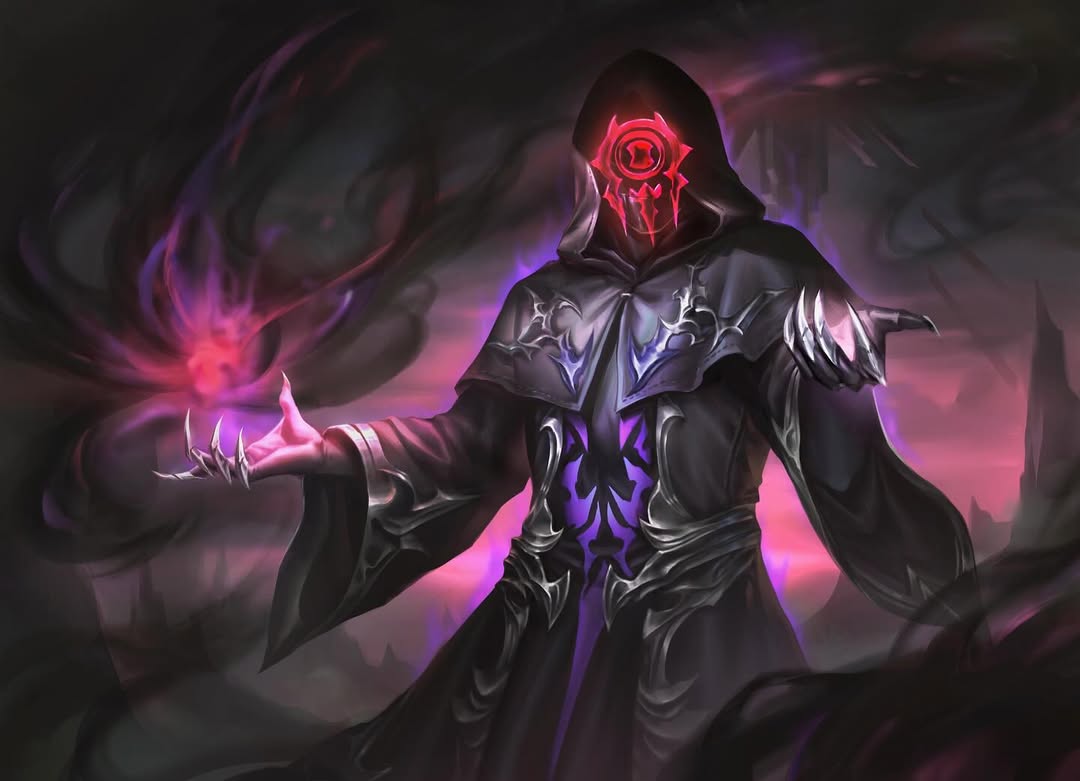Table of Contents [Show]
With any new set, you can expect a plethora of new (and sometimes, returning) cards that’ll grow as part of Magic’s many formats. For Pioneer, though, the most interesting card is a familiar face — Dark Confidant, or Bob for those who are familiar with him.
Dark Confidant has historically been a staple of the Jund Midrange decks of Modern for years, but has failed to find a home in the format recently due to the overshadowing of both the card and the deck in the wider Modern format. But, with a new home, can Bob make Jund finally shine?
In this guide, we’ll be going over Jund in the Pioneer format and why it’s worth playing over its other-coloured variants in the current metagame. We’ll go over my decklist as well as any changes that you might want to consider, and also take a look at the maths behind swaying the risk of Dark Confidant in your favour.
Introduction — Why Jund?
Jund Midrange is a deck with a storied history in Magic. Primarily a black midrange deck, it uses the raw aggression of red and the flexibility and survivability of green to be able to place cheap, efficient, value-based threats while protecting them with disruption.
From its origins during the Standard and Extended formats of the late 2000s to its time at the pinnacle of the Modern format, Jund has spent years defining formats and establishing itself as the de facto Midrange deck. But, in recent years, that’s completely changed.
Since the release of Modern Horizons in 2019, the playability of Jund has slowly fallen downhill in Modern. The format is far too quick and efficient, and the Midrange landscape has changed. However, in Pioneer, Midrange is still a deck that not only exists, but has been at the top of the metagame for a while. Whether it’s mono-black, Golgari, or Rakdos, Midrange in Pioneer has always been pretty successful at some point.
The only real missing deck is Jund, which has never really been a part of the format outside of Sacrifice. A lot of this is due to the manabases in the Pioneer format, and the lack of fetchlands, meaning that three-coloured manabases are difficult to pull off.
This is an obvious downside, but there are three reasons why I think Jund might actually be a better choice than any of the above in the format, despite its downside:
- The Metagame: Right now, the Pioneer Metagame is quite diverse. It consists of Mono-Red Aggro, Izzet Phoenix, Mono-Black Midrange, GW Angels, and UW Control. Jund has a diverse card pool, meaning that we can tech for more threats as well as have more options available.
- Versatility: While we do lose some consistency, we get to fix some of the lack of versatility in Mono-Black and Rakdos by adding cards like Abrupt Decay and Deathrite Shaman, while never losing the aggressive threats that Golgari loses by cutting Red (such as Kroxa, Titan of Death's Hunger and Fable of the Mirror-Breaker).
- Splashing: My version of Jund isn’t really that heavy into Green, and is more of a splash. You could play heavily into Golgari, and splash Red too. But, between Dark Confidant and cards like Deathrite Shaman and Fable of the Mirror-Breaker, the deck is consistent enough to be able to have all of the colours it requires to function.
However, a lot of this guide can also be applied to any other variant of Midrange, too, as the fundamental concepts are still the same.
The Deck
Ultimately, the deck is pretty standard if you’re familiar with Jund. It runs 23 lands, as the deck is more aggressively slanted but also needs to be able to curve out to four, and is also built around the maths of Dark Confidant.
When worked out using a Weighted Average, here’s how it looks:
Expected Life Loss = (13×1 + 14×2 + 8×3 + 2×4) ÷ (13 + 14 + 8 + 2) = (13 + 28 + 24 + 8) ÷ 37 = 73 ÷ 37 ≈ 1.97
We’re going to be losing, on average, 1.97 damage per Dark Confidant trigger, which is pretty safe. Of course, there’s still a cost here, but it’s tighter and the risk is mitigated. This does mean, though, that we lose 3-cost cards to make this work, which means that some cards like Graveyard Trespasser and Bonecrusher Giant miss out. The math slightly changes when considering Sideboarding, but there’s enough clearance here to account for that.
While Dark Confidant is a great new addition to the deck, one other great addition is Cecil, Dark Knight. This is essentially a Delver of Secrets on steroids for this deck, giving you a cheap but deadly threat that can help you stabilise late-game with Lifelink. Being Legendary, though, means that Cecil isn’t a four-of. We also have Deathrite Shaman, which, while not the powerhouse it is in fetchland formats, is a flexible survivability tool as well as a game-ender depending on the situation.
Ultimately, if you want to make your own take on this deck, try to stay within the mana values above to balance risk and consistency. Too many four-costs and three-costs and you’ll probably die too easily, but you can still balance the maths while keeping expensive cards like Sheoldred, the Apocalypse in your deck.
Matchup Guide
Mono-Red Aggro
In:
- 2 Collective Brutality
- 2 Scavenging Ooze
- 1 Kalitas, Traitor of Ghet
- 1 Languish
Out:
- 4 Dark Confidant
- 2 Thoughtseize
- 2 Liliana of the Veil
Ultimately, this matchup is about cutting down on cards that’ll make the game shorter, letting you draw out the game with your bigger threats and sweepers to turn the game in your favour.
Collective Brutality is a great card for this, as it provides both removal and lifegain baked into the same card. And, Kalitas, Traitor of Ghet and Languish are big threats that help you stabilise and gain control of the game, with Scavenging Ooze acting as an additional source of lifegain.
On the draw, you’ll want to take out 2 more Thoughtseize and put in 2 [card]Liliana of the Veil. Thoughtseize isn’t as great on the draw as you’ll usually want to try to play a removal spell or your own defensive threat, as your opponent has an extra turn to kill you, and you’ll have to stem the bleeding as quickly as possible.
Izzet Phoenix
In:
- 2 Unlicensed Hearse
- 2 Go Blank
- 2 Necromentia
Out:
- 2 Liliana of the Veil
- 2 Fatal Push
- 2 Go for the Throat
Izzet Phoenix is both an aggressive and recursive deck, meaning your removal isn’t nearly as good due to Arclight Phoenix being able to return over and over. This is why we bring in disruption, to try and stop the Phoenixes from being able to come back.
Go Blank is a great piece of discard, while also resetting a graveyard to stop Arclight Phoenix and [card]Treasure Cruise from being relevant, and Unlicensed Hearse is both graveyard hate and an end-game threat. Necromentia can hit Phoenix and remove your opponents’ key threat, making the game far easier to close out.
UW Control
In:
- 2 Duress
- 2 Go Blank
- 2 Necromentia
Out:
- 4 Fatal Push
- 2 Go for the Throat
UW Control is a decent matchup, if we can resolve and keep a Dark Confidant around for a few turns. This’ll let us take over the game and snowball, and let us beatdown our way to victory very quickly.
Very simply, we’re removing unnecessary removal here and opting for disruption to try to keep the pressure up while also ruining the control deck’s game plan.
GW Angels
In:
- 1 Kalitas, Traitor of Ghet
- 1 Languish
- 2 Scavenging Ooze
- 2 Collective Brutality
Out:
- 4 Dark Confidant
- 2 Liliana of the Veil
GW Angels is very aggressive, and so threats like Dark Confidant and Liliana of the Veil won’t cut it. So, we bring in our standard anti-aggro plan to try to stabilise and win through shutting down our opponents.
Hidden Strings
In:
- 2 Duress
- 2 Necromentia
- 1 Damping Sphere
- 2 Collective Brutality
- 1 Go Blank
Out:
- 4 Fatal Push
- 2 Go for the Throat
- 2 Abrupt Decay
Against Hidden Strings, we take out removal and bring in disruption to try to keep them off the combo while we beat them down. Necromentia and Damping Sphere are both key here to stop the combo turn, with both of these essentially stopping their plan altogether.
Midrange
In:
- 2 Go Blank
- 2 Unlicensed Hearse
Out:
- 4 Thoughtseize
We take out Thoughtseize to improve our late-game topdecks, and essentially try to just draw the game out and gain more value over time.
Closing Time
Jund might be a memory of the past, but Dark Confidant is here to bring it a new lease of life, even if it’s in Pioneer and not in other formats. Ultimately, this deck is a combination of both the past and what newer midrange decks in the Pioneer format bring to the table.
Once Final Fantasy drops, expect to see lots of Dark Confidant in Pioneer, as well as Cecil, Dark Knight. Whether Jund is victorious or one of the other variants stays at the top, one thing is for sure — midrange is only going to get better.
Thank you for reading, and see you in the stars.


